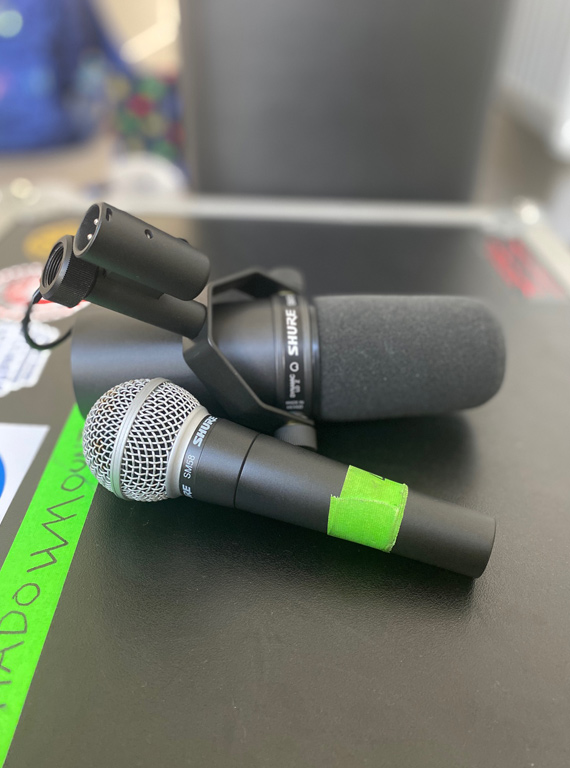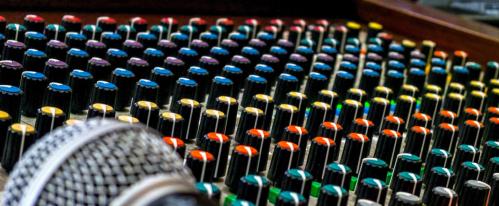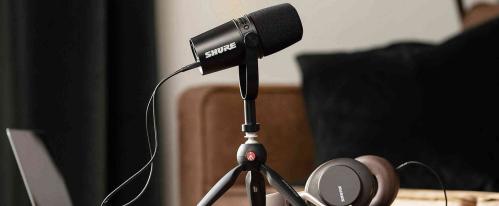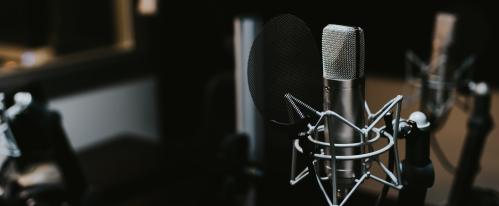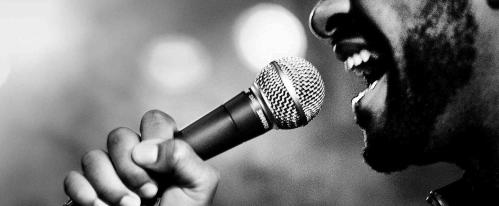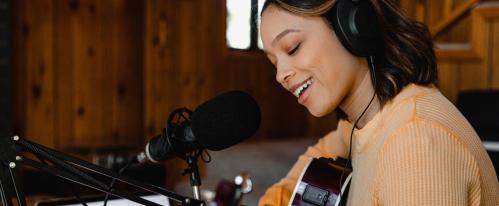We compare the Shure SM7B vs SM58 and find out which microphone is better for you in the live and studio environment, or both!
Today, we’re comparing the Shure SM7B vs SM58, both industry-standard microphones widely used by studio and live musicians of all styles and skill sets. These microphones are a great equaliser between artists, as everyone from the most inexperienced beginner recording artists to the most professional, “high-budget” artists will have either used these microphones to play live or record with. You may even own them already.
Everyone from Corey Taylor of Slipknot to the local karaoke bar down the road from your house will have an SM58, and whether it's the most (in)famous podcasters talking about the issues of the world or Metallica demoing new tracks, you will find an SM7B – they’re extremely versatile microphones relied upon by heavyweights and beginners in the music industry alike. We’ve talked about why you need the Shure SM7B and why the Shure SM58 is so popular in great detail, but now we’re going to compare the two.
So, what’s the difference between the Shure SM7B and the Shure SM58? And why would you choose one over the other? Or buy both?
Full disclosure: I have both and use both of these microphones regularly when playing live and recording/demoing songs and audio. There are definitely subtle differences and quirks you may not have read about between the SM7B and SM58 which you’ll need to know before buying.
So, let’s dig into the basics.
Here’s a list of what we’ll discuss in this comparison:
- Quick overview and comparison of benefits
- Similarities between SM7B and SM58
- Differences between SM7B and SM58
- Frequency response differences between SM7B and SM58
- Polar Patterns
- Is The Shure SM7B better than the SM58?
- Final thoughts and conclusion
Shure SM7B - Quick Overview
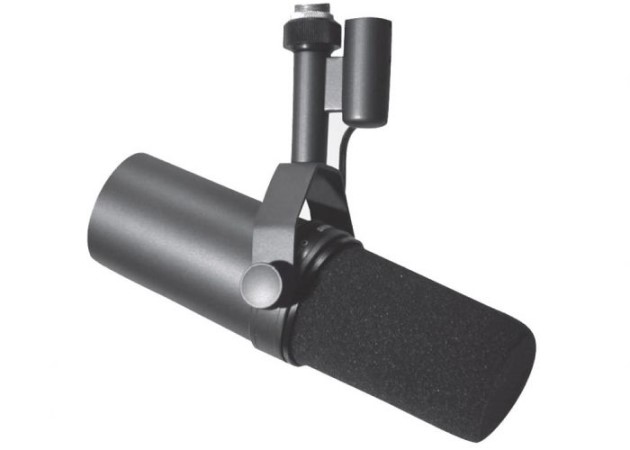
The Shure SM7B is a dynamic microphone and an industry-standard podcast, broadcast, and live session microphone that vloggers, YouTubers and podcast hosts rely on for world-class sound.
Benefits
- Is the industry-standard broadcast and podcast microphone – you can’t go wrong
- Provides a slight presence boost from around 5 kHz
- Offers onboard controls for frequency sculpting
- Has a built-in swivel mount
- Has a removable pop filter and windshield – fewer plosives
- Can be used for live sessions
Downsides
- More expensive than the SM58
- Needs more gain to get the best sound
- Larger model
- Doesn’t cut through the mix in a live scenario as much
Shure SM58 - Quick Overview
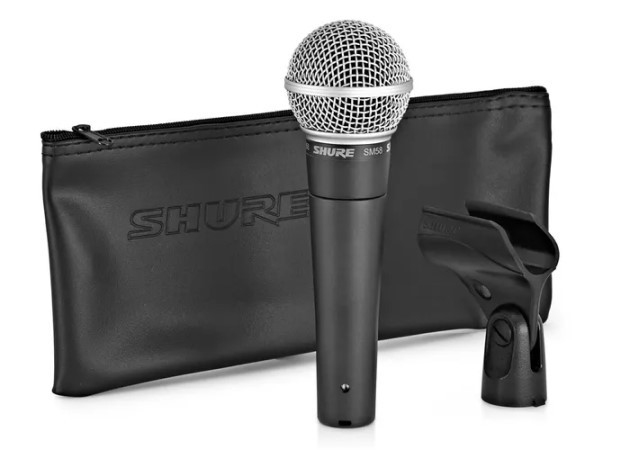
The Shure SM58 is the industry standard live vocal handheld microphone. It is an almost indestructible dynamic microphone that live artists, public speakers and venue owners rely on to get the best live sound possible.
Benefits
- It’s the industry-standard live vocal microphone
- Provides a presence boost from 2 kHz to 7 kHz
- It’s almost indestructible - it’ll last a lifetime
- Provides accurate sound at high levels
- Less susceptible to feedback when gain is added
- Fairly “cheap” compared to other microphones, but it certainly doesn’t suck
- Can be dropped and damaged but still work fine
Downsides
- Plosives and sibilance are a little more apparent due to the thin pop filter
- Doesn’t sound as polished in a recording scenario
- That’s about it – there are no real downsides!
The similarities between the Shure SM7B and SM58..
When comparing the Shure SM7B vs the SM58 we need to talk about the similarities first..
- Both the SM7B and the SM58 are dynamic microphones.
- Both have a bass roll-off yet the SM7B is switchable, the SM58 is always on.
- They don’t need phantom power.
- Both microphones are based on the Unidyne III cartridge but sound quite different in application.
- Both microphones have a cardioid polar pattern to reject off-axis noise.
- Both mics have a low-end frequency response starting at 50Hz.
- Both have a 3-pin XLR connection.
- Both can be used live.
- Both mics offer a pleasant bass roll-off feature which helps with the proximity effect, or the heavy, bass boom that you don’t want in your signal – we’ll get to that in the Frequency section. This means it cuts out some of the low-end frequencies, allowing you to create music, sing or speak without fear of the microphone starting to rumble or distort at low volumes.
- Both mics are based on the Unidyne III capsule, which you might think would make them sound the same.. But that’s not strictly true, as the design of the two mics differs in such a way that it affects the sound. We’ll get to that in the next section…
The differences between the Shure SM7B and SM58..
The differences between the Shure SM7B vs the Shure SM58 may seem subtle, but when you look closely, they offer very different sonic qualities for varying environments.
The major difference comes in what the mics are designed for. The Shure SM7B is designed predominantly for studio use and broadcasting where spoken word or performed vocals in a controlled environment are being recorded. The SM58 is far more rugged and designed for live vocals thanks to the fact the capsule is directly behind the grille.
- The Shure SM58 has a frequency response of 50Hz – 15,000 kHz, while the Shure SM7B has a frequency response of 50Hz – 20,000 kHz. This means the SM7B offers greater detail at higher frequency levels.
- The Shure SM7B requires a preamp with around 60dB of gain to get the best sound. The Shure SM58 does not. Fortunately, the likes of the Dynamite is budget-friendly and instantly lifts your sound making it more audible. Some audio interfaces offer this gain lift, so look for audio interfaces with built-in preamps.
- The Shure SM7B has onboard controls allowing you to set it at Flat (factory settings) or to engage a High Pass Filter / Low Cut Switch, which reduces the bass frequencies from 300 Hz and provides a more pleasant listening experience in a live situation by taking the unnecessary bass out of vocals. You also have an option to bump the mid frequencies and affect the 900 – 7000 Hz frequency via the Mid Frequency Boost Switch which helps lead vocals stand out over a band or helps add “life” to a dull voice in a podcast.
- The Shure SM58 has no onboard switches.
- The Shure SM7B has a removable windshield and integrated pop filter. The Shure SM58 Has a smaller pop filter and a very thin windshield underneath it.
- The SM7B is larger than the Shure SM58.
- The Shure SM7B had a built-in swivel mount. The Shure SM58 does not.
- The SM7B sounds clearer with a subtle low end even up close. The SM58 gets boomier the closer you get due to the shorter distance of the capsule from the pop filter.
- The SM58 can be heard better at a distance than the SM7B. Again, this is due to the capsule placement.
- The Shure SM58 is designed for live applications. The Sure SM7B is designed for broadcast, and podcast applications.
- You’ll get more plosive noises with the SM58 due to the smaller pop filter. You won’t really hear them in a live scenario, but you might in a recording situation unless you use a pop filter.
Frequency Response Differences between the Shure SM58 and Shure SM7B
In short, the Shure SM58 has a frequency response of 50Hz – 15,000 kHz, while the Shure SM7B has a frequency response of 50Hz – 20,000 kHz.
Why is this important to know?
This difference in frequency response between the SM58 and SM7B shows you why one is better than the other for live vocals. And which is better for studio or “controlled” environments.
Shure SM7B Frequency Response
As you can see in the image below, the SM7B has a smooth, flat, wide-range frequency response, which is suited to all types of vocals that want to sit nicely within a mix. The thick dotted line is with the bass roll-off engaged, and the thin dotted line is when the presence boost is engaged. As you can see they’re not particularly dramatic changes, but they will make subtle yet noticeable differences to a recording.
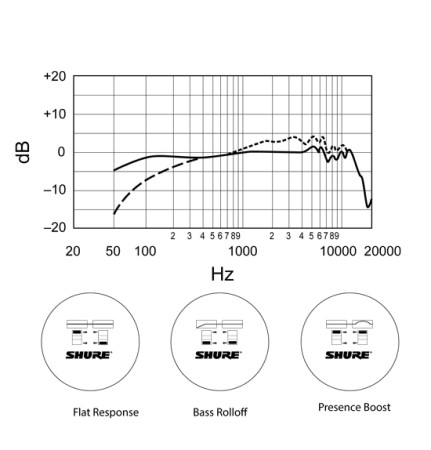
In a studio session where you have control and time to even out the mix during and in post-mix, the vocals can sit nicely, but it lacks the immediate presence compared to the SM58. This is fine in a live session or in a recording studio where you can mix the track to your liking, but the SM7B might lack power on a live stage, especially in a room that hasn’t been treated acoustically.
Shure SM58 Frequency Response
As you can see in the image of the Shure SM58 frequency response, the SM58 offers a steeper presence boost from just before 2 kHz to 7 kHz where it starts to taper off. This means you are instantly hearing the higher frequencies as soon as you start singing, and can enjoy a vocal that stands out from the mix – ideal for fronting a band, live singing and public speaking. If you’re surrounded by other instruments, this is exactly what you need to ensure your vocals don’t get lost and the major reason the Shure SM58 is the best live vocal microphone.
The bass roll-off is also perfect for vocalists who place their lip on the microphone as it doesn’t suffer from the proximity effect that some mics do. You can get as close as you want. The mic just gets bassier but doesn’t sound muddy. The engineer can just mix that out for you!
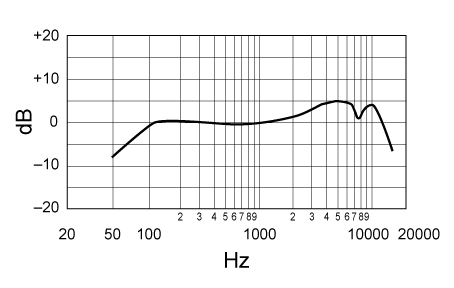
Polar Patterns of The Shure SM58 vs SM7B
Both the Shure SM7B and the Shure SM58 have a cardioid polar pattern which means they reject off-axis noise. This is the noise around you. However, there are subtle differences between the two that may change the sound slightly. These changes show where the two are better suited to live or studio applications.
The Shure SM58 still picks up some sound at around the 125Hz mark. The smaller circle in the centre is where you would commonly place the mic. So, you can see that the SM58 picks up a slight room sound. This gives your mic more life which is what you need in a live scenario.
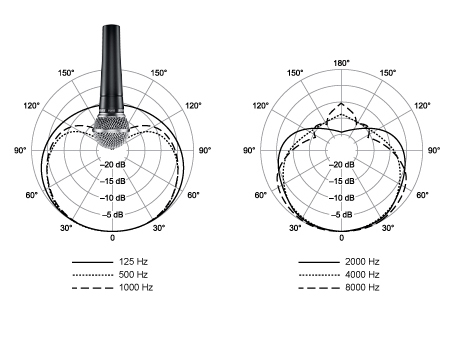
The Shure SM7B completely rejects anything behind the microphone, providing a cleaner, polished sound, which is exactly what you need for a podcast, broadcast and recording scenario. In a live situation, it may make your voice sound a little too clean, which is not really what you want if you’re looking for that live “vibe”.
Or maybe it is? It’s entirely up to you.
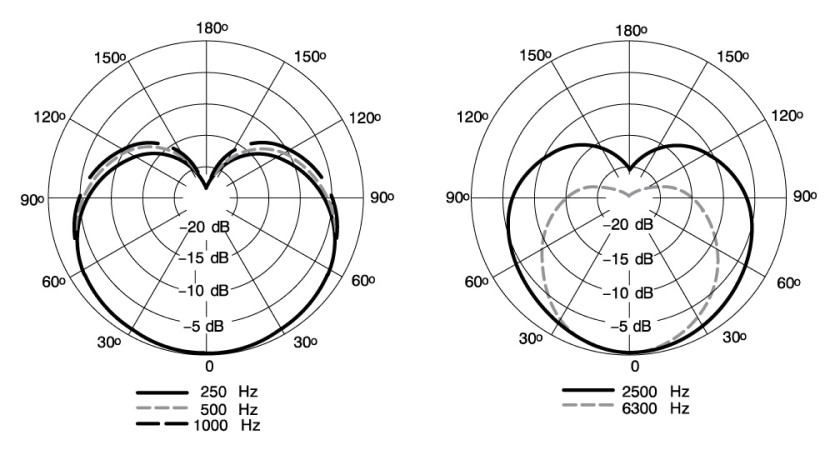
Shure SM7B vs SM58 for Recording and Live
So which mic is better for recording and which mic is better for live use when it comes to the SM58 vs SM7B?
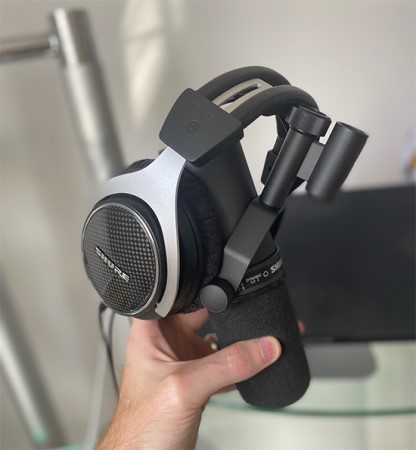
Is the Shure SM7B or SM58 better For Live Use?
Both the Shure SM7B and the SM58 can be used for live vocals. But due to the built-in presence boost, bass roll-off which stops the proximity effect and the rugged design capable of withstanding decades of touring, the SM58 is the better live mic when compared to the SM7B. The Shure SM58 is regarded as the best live vocal mic ever made, so it’s safe to say the Shure SM58 when compared to the Shure SM7B is the better live vocal mic.
However, if you’re doing live sessions that are being recorded in a controlled atmosphere, you may want the controlled, isolated sounds of the vocals to be clearer. In this case, the SM7B would be preferable. But in this scenario both are fine and many artists record live sessions with an SM58.
In short:
Shure SM58 = livelier sound with a presence boost
Shure SM7B = controlled live sound with a flatter sound
Is the Shure SM7B or SM58 better For Recording?
Both the Shure SM7B and the SM58 can be used for recording. However, the more controlled, isolated sound from the SM7B is preferable on record, podcasts or recorded audio. The polar pattern is tighter and the frequency response is flatter, with subtle changes to make specific vocals clearer or stand out more without overtaking the recording. The pop filter and windshield also reduce plosives.
When you record vocals with an SM58 you know you’re using a mic, when you record vocals with an SM7B you just think the person is sitting next to you and talking with you.
Can you use a Shure SM7B live?
Yes, you absolutely can. The highly targeted polar pattern ensures you can’t hear anything else around you other than your voice and the windshield gives you somewhere to place your mouth and eradicates plosive noises. However, due to the nature of live shows, it’s best to get as close to the mic as you can.
You’ll also need a pre amp with at least 60dB of gain to hear it properly.
Can you use the Shure SM58 for recording?
Yes, you can, but you’ll need a pop filter or windshield to reduce the number of plosives. It will provide a livelier sound and more room ambience, but it can be done. And to great effect!
Is The Shure SM7B better than the SM58?
Overall when it comes to the question of whether the Shure SM7B is better than the SM58, it simply comes down to what you’re using it for. In short, the SM58 is cheaper and should be everyone’s first handheld microphone. However, when you want to record vocals on a more professional-level for records, podcasts, or broadcasting, the SM7B is a perfect choice.
The SM58 offers more presence and steeper bass roll-off, whilst the SM7B has a tighter, cleaner and more polished sound.
Why would I choose the SM58?
If you need a hard-wearing, handheld microphone the Shure SM58 is hands-down the absolute best option and industry-standard live mic, surpassed only by the Beta 58A model (read our comparison between the Shure SM58 vs Beta 58A vs Beta 87A) that won’t ever let you down and will last a lifetime. You can record with it to a high level and you don’t need to power it or add extra gain – just some pop shields or a stand.
Why would I choose the SM7B?
If you want the ultimate podcast, live session, and vocal recording microphone the Shure SM7B is the obvious choice, perhaps only challenged by the MV7 or the SM57. If you run live band sessions that you want to record and distribute, produce podcasts, or broadcast internet radio, get this. You won’t look back. The swivel mount makes it easy to add to your set-up and the onboard switches make subtle yet highly-effective changes.
Final Thoughts & Conclusions
At the end of the day, every live vocalist should own a live vocal microphone. Hygiene reasons aside, owning a mic will help you practice technique, get used to how your mic sounds and shows you have a professional attitude towards vocal performance.
The SM58 is a great entry-level mic, that’s actually the industry-standard professional-level mic – not a lot of microphones can hold simultaneous titles like that! Venue and house of worship PA systems will benefit from the ease of set-up and low cost whilst your performers and sound engineers will thank you for having a decent mic to work with.
The Shure SM7B may have more of an aspirational price tag, but it’s just like a security system for your voice – you won’t find a better vocal microphone that does such an incredible job of making your voice sound natural on record or in a live session.
If you’re looking for a reason to buy either one… this is it. You won’t ever regret buying a good mic, but you may always regret a bad recording.
Need help picking out a new microphone? Want to check out the latest studio gear at PMT? Call us on 0151 448 2089 or check out your local store to speak to one of our Experts about your needs.

